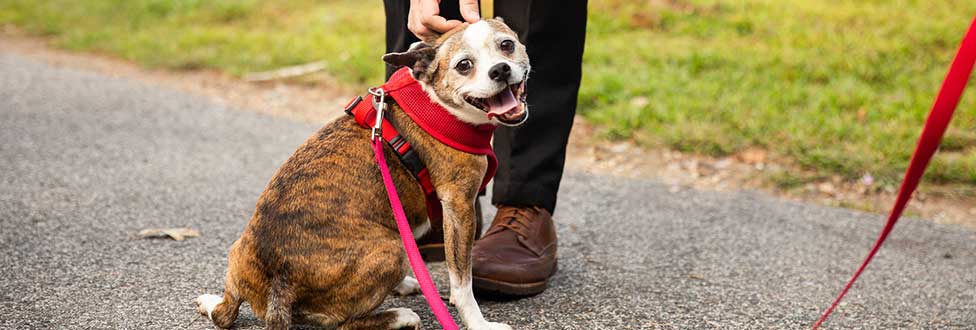Welcoming Your Adopted Dog into Your Home
Congratulations! You’ve adopted a dog and it’s going home with you this afternoon, so what’s next? After dog-proofing your house and gathering the necessary supplies (collar, ID tag, water bowl, crate, food, toys, and cleaning products), you’ll need to think about how to acclimate your pup the moment his paws walk through your front door.
Follow these tips to help your furry family member settle into their new house:
The first day
- Bring your dog straight home and do not stop for errands along the way.
- Calmly introduce to your pup to your family members outside, one at a time.
- Limit visitors to prevent your dog from getting overwhelmed.
- Keep your pup leashed, and lead them into the house for a tour of each room.
- Stay close to home and do not go out on any major excursions.
- Take your dog outside often for bathroom breaks, even if they were housetrained previously.
- Give your pup ample quiet time to acclimate to their new surroundings.
Daily routines
- Place your dog’s crate or bed in the room where you would like them to sleep, not in an uninhibited area, such as the garage or basement.
- Offer your pup 2-3 meals per day; do not leave a full bowl of food out for them all day.
- Use chew toys and interactive toys to keep your dog physically and mentally busy.
- Keep walks to 5-10 minutes until you get to know your dog’s behavior and response to stimuli, such as cars, unfamiliar people, and squirrels.
Prevent anxiety with being left alone by not making a fuss over your comings and goings. Practice leaving your pup in the crate and/or with chew toy for short periods several times per day.
Relationship building
- Stimulate your dog physically and mentally with training. At ARL, we believe that positive reinforcement, reward-based training methods are the best course of action, especially when teaching dogs new things or desensitizing fearful dogs to new experiences.
- Play the “name game” by periodically calling your dog’s name when they look at you and rewarding them with a piece of kibble as a treat. (See Pg. 8 for more on this training method.)
Adopting a dog from the South? “They may need additional time to adjust to their new environment,” explains ARL’s Animal Behavior Manager, Laney Nee. “Southern dogs have likely never been exposed to city noises, loud trucks, or lots of people, including men and children. Any aggressive behavior that they exhibit is simply a reaction to their fear and discomfort and should not be misconstrued as ‘bad’ behavior.” Adopters will need to exercise patience to help their new pup acclimate to simple things, such as living indoors, being confined to a leash, and being the only dog around for the first time. “It’s important to pair the thing that they are afraid of with delicious high-value food so that they build a more positive association to the new thing they are fearful of,” says Laney.
If you have basic behavioral questions about your pet, contact ARL’s FREE Pet Behavior Helpline at (617) 226-5666 or behaviorhelpline@arlboston.org. A representative will get back to you within 48 hours.

